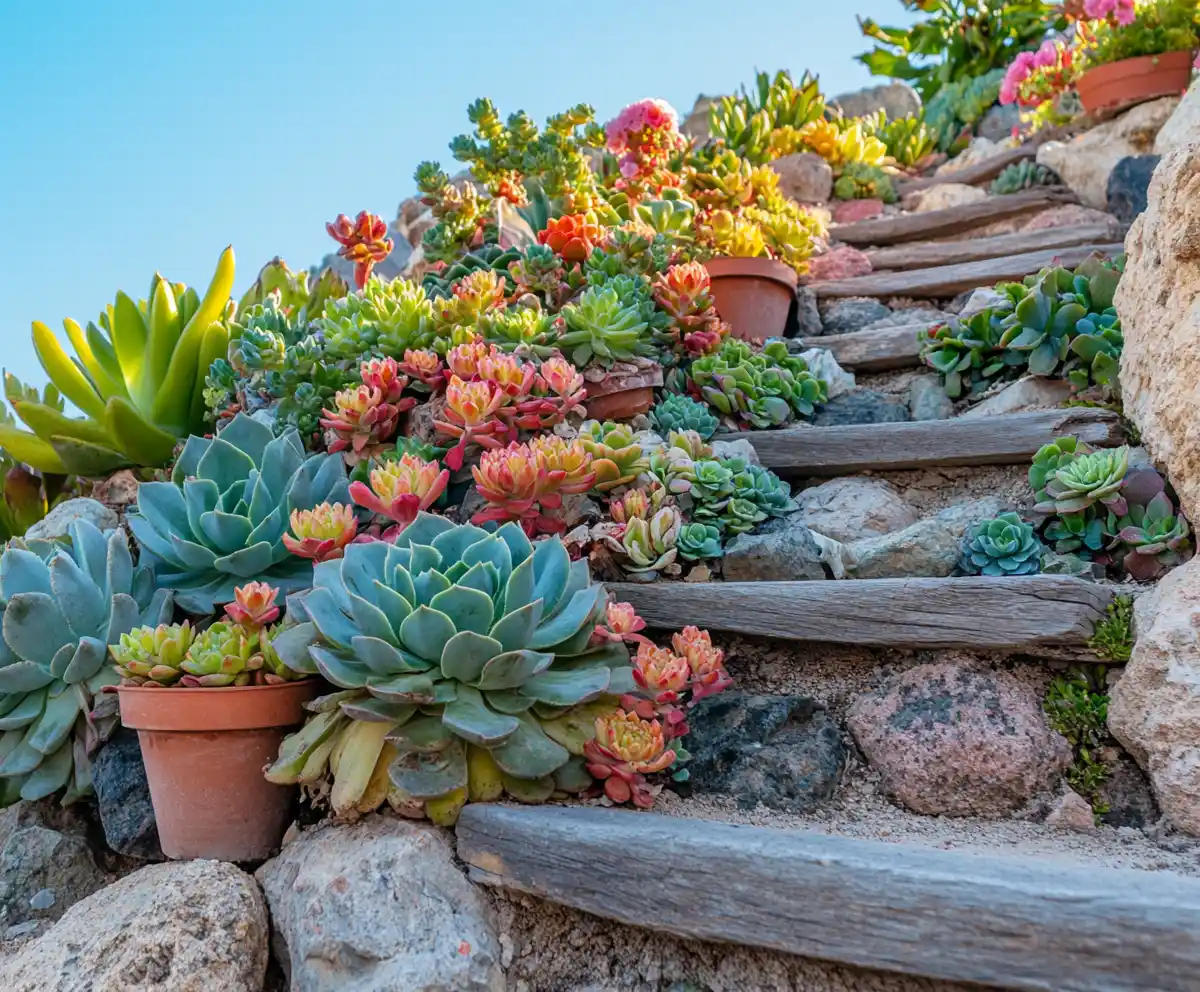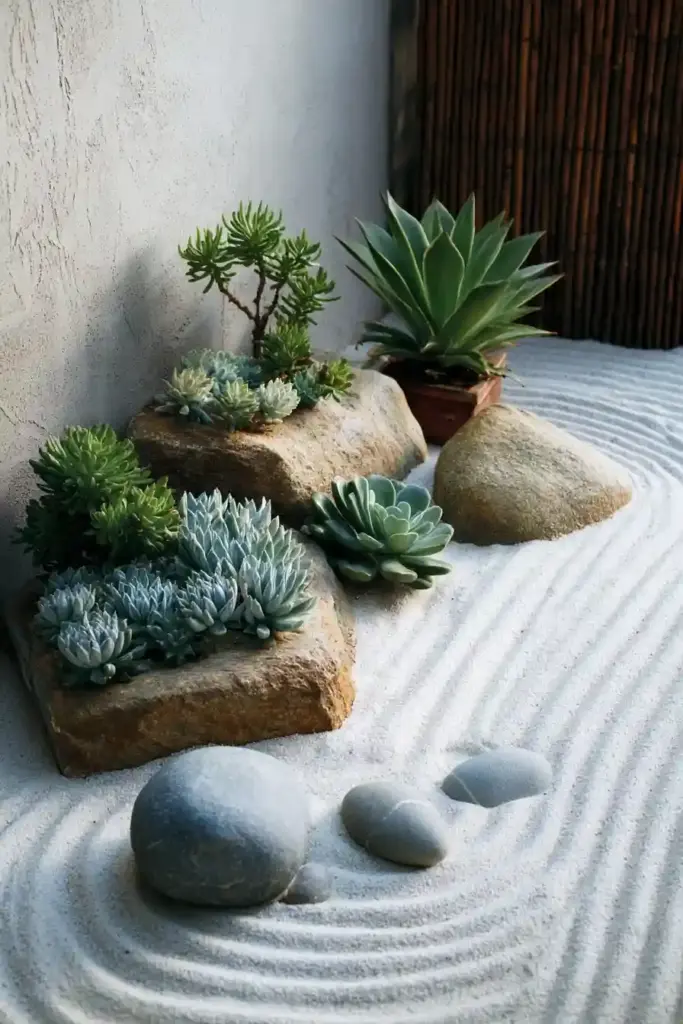If you’re dreaming of a gorgeous yard that’s easy to maintain and environmentally friendly, succulent landscape design ideas might be exactly what you need. Succulents bring natural beauty, resilience, and a charming variety of textures to any outdoor space — all while being exceptionally drought-tolerant. Whether you have a sprawling garden or a small patio, these versatile plants can transform your landscape into a lush, low-maintenance oasis.
By mixing planters, smooth stones, vertical displays, and a range of natural textures, you can create eye-catching succulent gardens that are both artistic and sustainable. In this guide, we’ll explore inspiring succulent landscape design ideas that can help you craft a backyard retreat you’ll love for years to come.
Table of Contents
Succulent Landscape Design Ideas
Zen Garden Oasis
Imagine stepping into a peaceful retreat right in your backyard — that’s the magic of a Zen garden infused with succulents. For this design, combine smooth river stones, fine sand, and carefully selected succulents like Haworthia, Jade plants, and Echeveria. Arrange the sand and stones in gentle, flowing patterns to evoke calmness, and plant the succulents in minimalist groupings to maintain a serene aesthetic.
Tips for creating a Zen succulent garden:
- Use a neutral color palette with soft greens and muted blues.
- Choose succulents with symmetrical, calming shapes.
- Add a small bench or a stone lantern for a finishing touch.
- Rake the sand into soothing ripple patterns around the plants.
A Zen garden with succulents not only enhances your outdoor space but also offers a place to relax and recharge after a busy day.
Coastal Vibes
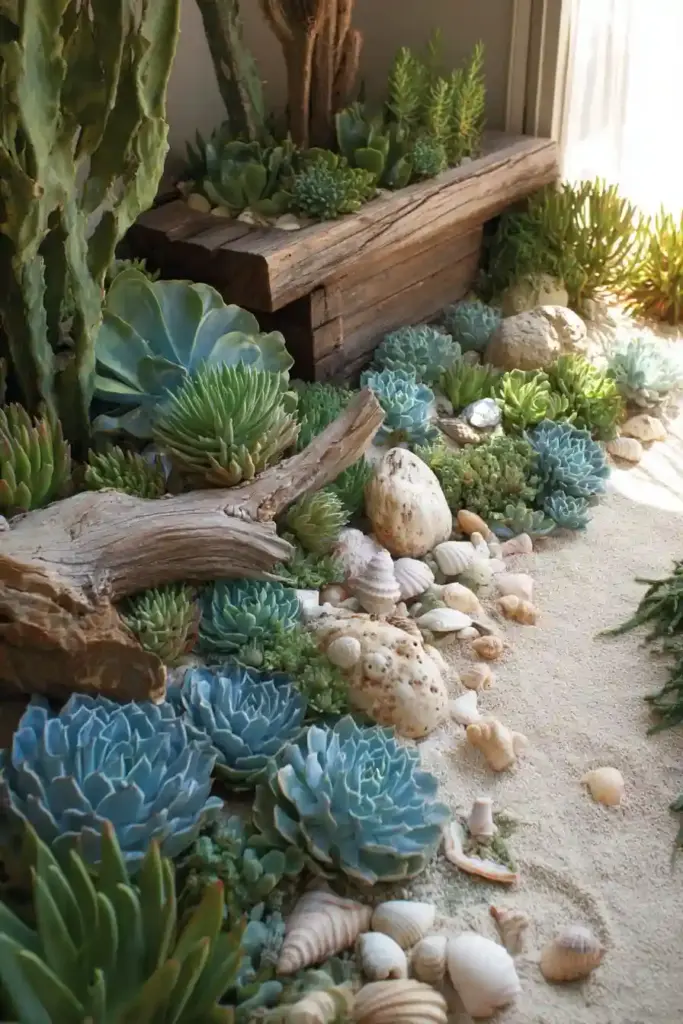
Bring the calming energy of the ocean into your backyard with a coastal-inspired succulent garden. To capture this breezy, beachy feel, focus on blue and green succulents like Blue Chalksticks (Senecio serpens), Agave, and Echeveria varieties with sea-toned hues. Complement these plants with natural elements such as driftwood, weathered stones, seashells, and even pieces of coral.
How to achieve a coastal succulent landscape:
- Group succulents with soft, cool-toned colors to mimic ocean waves.
- Scatter driftwood or reclaimed wood around the garden for an organic, weathered look.
- Incorporate white sand or pale gravel to brighten the scene.
- Add shells and pebbles as subtle decorative accents.
This soothing setup delivers a permanent vacation vibe, making every day feel like a walk along the shore.
Cacti Wonderland
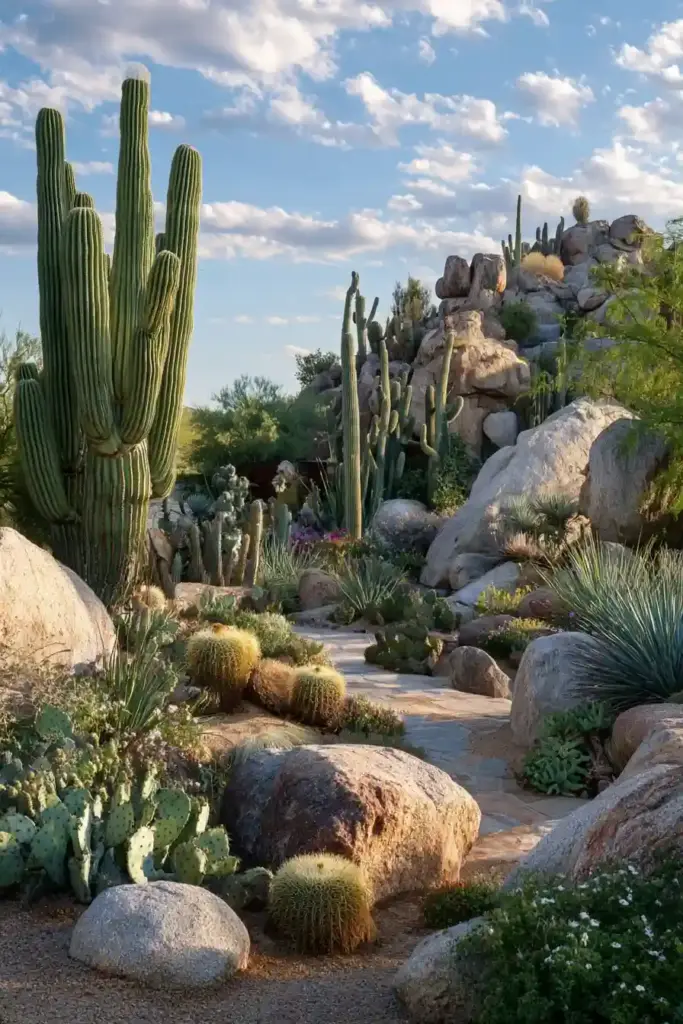
If you love bold, dramatic landscapes, creating a Cacti Wonderland might be the perfect fit. Cacti offer striking shapes, impressive sizes, and hardy resilience, making them ideal focal points for a desert-inspired succulent garden. Mix towering saguaros, clustered golden barrel cacti, and low-growing prickly pears to build a diverse, layered scene full of character.
Tips for designing your own Cacti Wonderland:
- Use a variety of cactus sizes and forms to create visual depth.
- Space out larger cacti and fill the gaps with smaller succulents or desert gravel.
- Add large rocks or boulders for a natural, rugged backdrop.
- Choose drought-tolerant companion plants like agave or yucca for extra texture.
A Cacti Wonderland brings the wild spirit of the desert into your yard while keeping maintenance incredibly low.
Rustic Barrel Planters
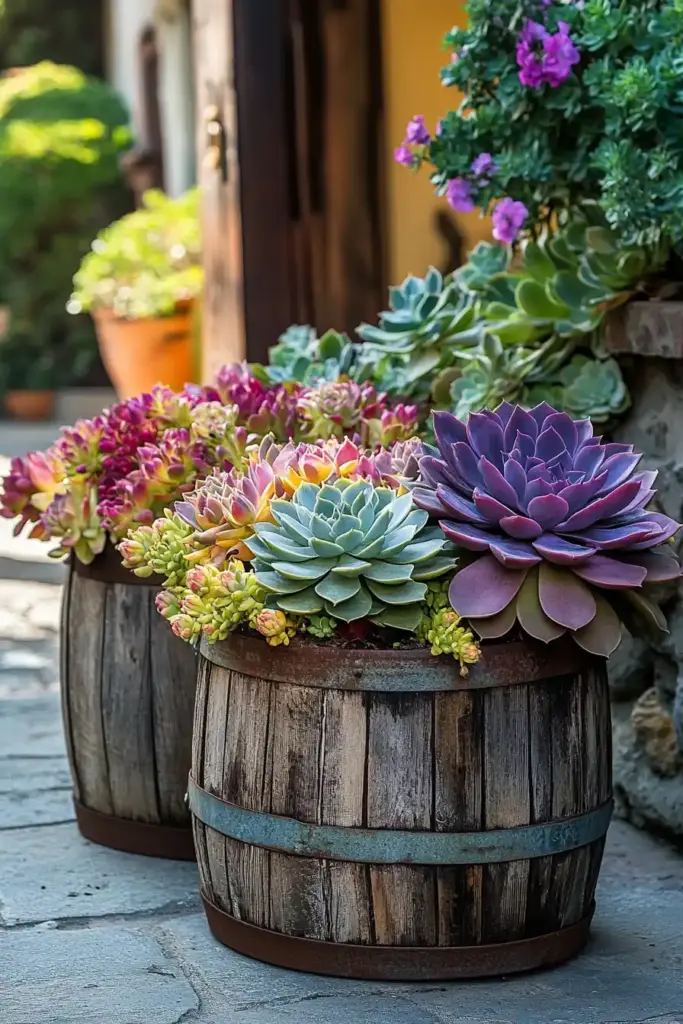
For a charming, countryside feel, consider incorporating Rustic Barrel Planters into your succulent landscape design. Repurposing old wine or whiskey barrels filled with colorful succulents creates a cozy, lived-in look that’s both stylish and sustainable. Barrel planters are perfect for patios, entryways, or tucked into garden corners where they can shine as rustic focal points.
Ideas for creating stunning barrel planters:
- Mix trailing succulents like String of Pearls with upright varieties for dynamic arrangements.
- Use barrels of different heights to add visual layers to your garden.
- Choose succulents in warm tones — think reds, oranges, and yellows — to complement the natural wood.
- Add decorative touches like vintage watering cans or lanterns nearby for extra farmhouse flair.
Rustic barrel planters not only recycle old materials but also infuse your outdoor space with warmth and character.
Succulent Pathway
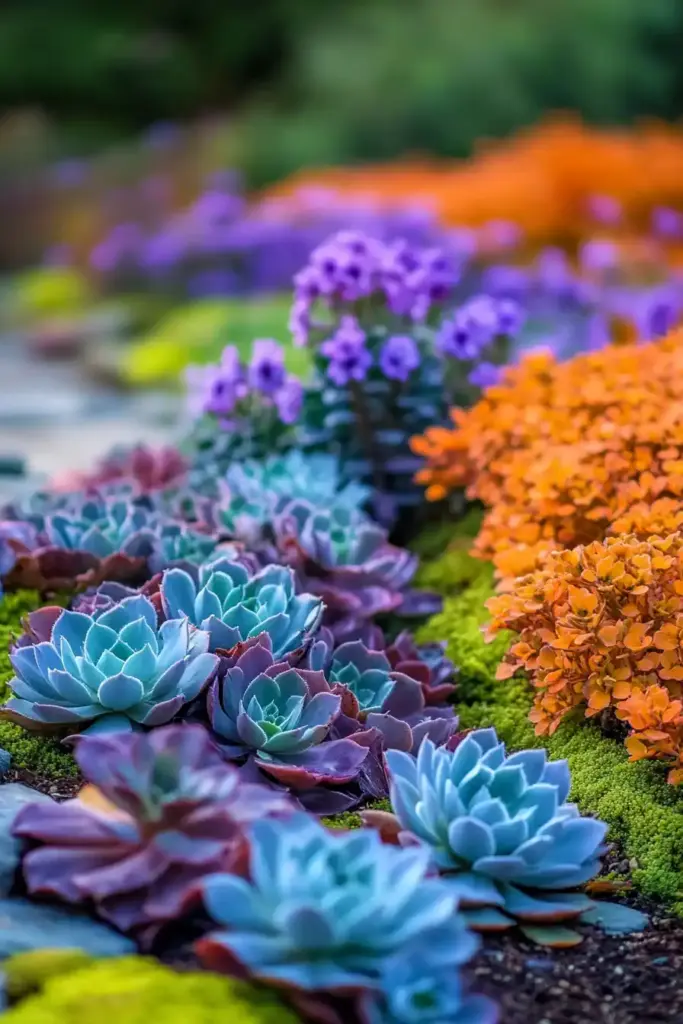
Turn ordinary garden paths into enchanting trails with a Succulent Pathway design. By lining walkways with low-growing succulents like Sedum, Ice Plant, or Dwarf Jade, you create a lush, living border that softens hard edges and adds vibrant color. Succulent pathways are not only visually stunning but also practical, helping to define garden spaces while requiring minimal upkeep.
How to craft a beautiful succulent pathway:
- Plant compact, ground-hugging succulents along both sides of the path.
- Mix different textures and shades of green, silver, and burgundy for more visual appeal.
- Use stone, brick, or gravel for the path surface to contrast with the lushness of the plants.
- Ensure proper drainage to keep succulents thriving, especially near paved areas.
A succulent pathway invites visitors to explore your garden while showcasing the natural beauty and resilience of these wonderful plants.
Vertical Gardens
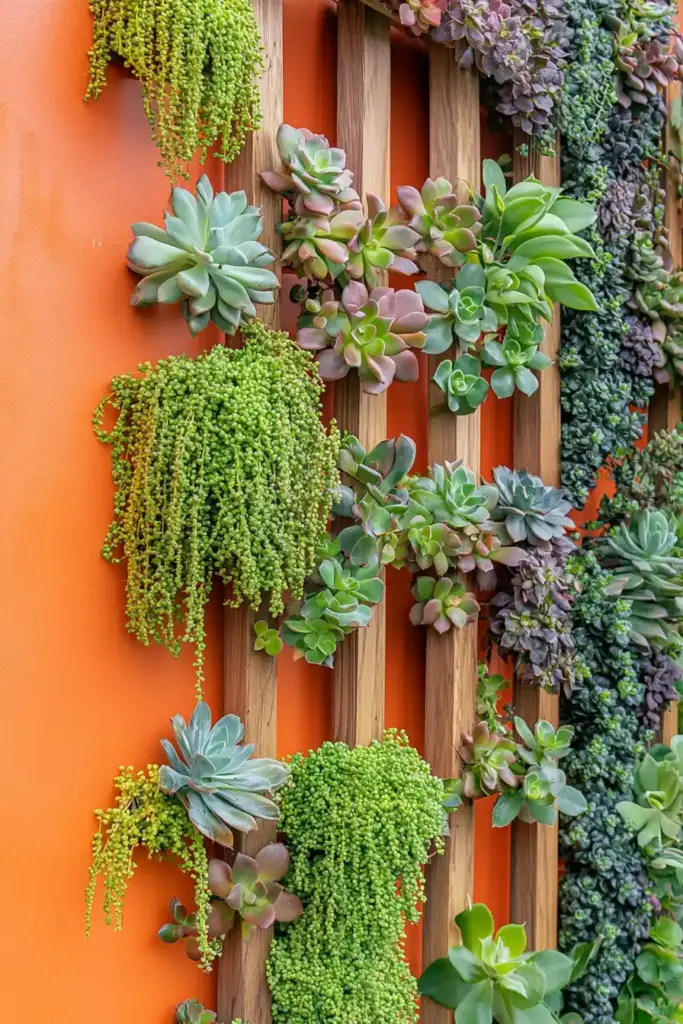
If you’re working with limited space or simply want to make a bold statement, Vertical Gardens filled with succulents are a creative and eye-catching solution. Growing succulents vertically — whether on a wall, trellis, or in hanging planters — brings height, texture, and color to your garden while maximizing every inch of available space.
Tips for designing a thriving vertical succulent garden:
- Choose lightweight, shallow-rooted succulents like Crassula, Sempervivum, and small Echeverias.
- Use sturdy structures like wooden frames, wire grids, or recycled pallets to support the plants.
- Arrange succulents tightly together to create lush, mosaic-like patterns.
- Position your vertical garden in a spot with plenty of sunlight and easy watering access.
Vertical succulent gardens not only beautify blank walls but also add an artistic flair that transforms small areas into lush living masterpieces.
Mixed Textures
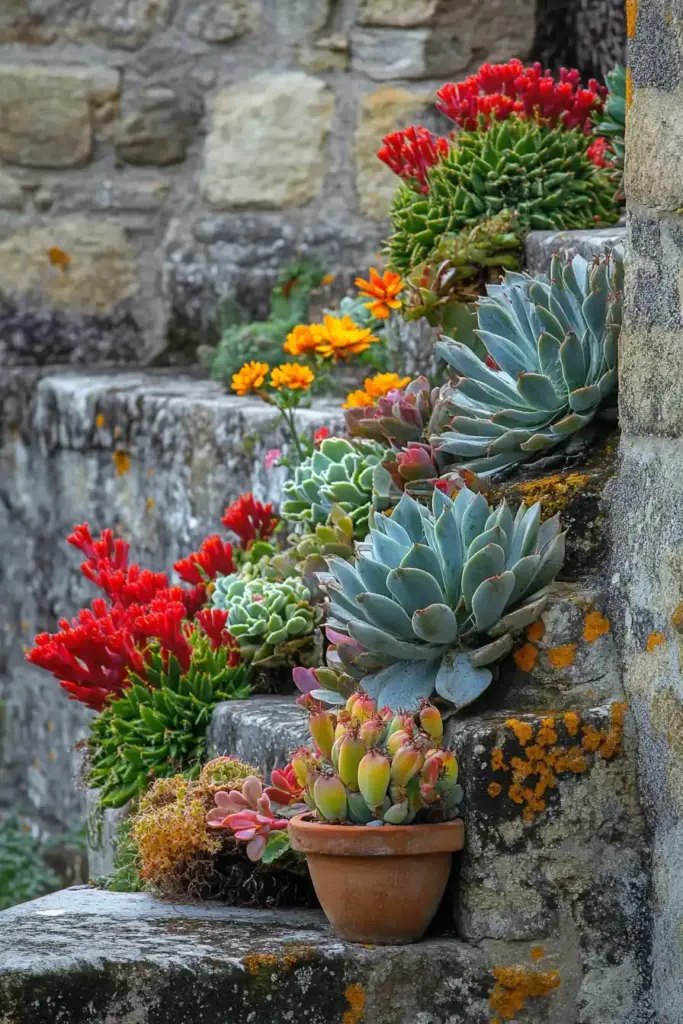
One of the easiest ways to elevate your succulent garden’s visual appeal is by embracing Mixed Textures. Succulents come in an incredible variety of shapes, surfaces, and colors — from the silky smoothness of Echeveria to the fuzzy charm of Kalanchoe tomentosa and the dramatic spikes of Aloe. By thoughtfully combining different textures, you can create a rich, layered garden that feels dynamic and alive.
How to master texture mixing with succulents:
- Pair smooth, rosette-shaped succulents with spiky or trailing varieties.
- Use bold contrasts, like placing soft, velvety plants next to rigid, angular ones.
- Group plants with different leaf sizes and structures to keep the eye moving.
- Incorporate stones, pebbles, and driftwood to add even more tactile variety.
A garden full of mixed succulent textures invites closer inspection and brings a lively, artistic feel to your landscape.
Colorful Succulent Arrangements
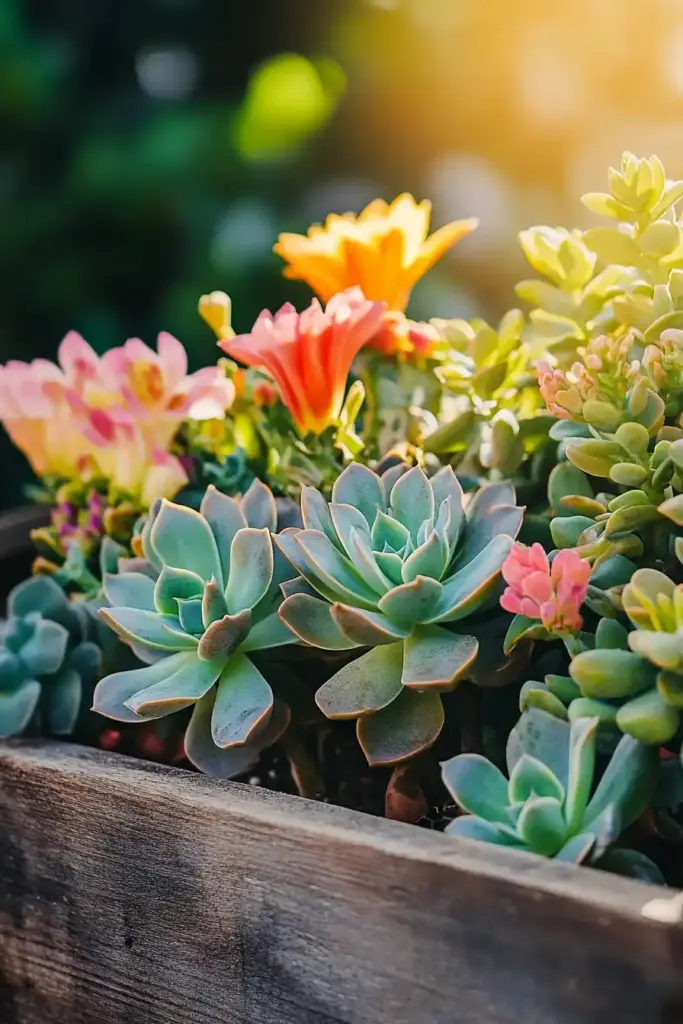
If you love gardens that burst with personality, Colorful Succulent Arrangements are a must-try. Succulents aren’t just green — they come in shades of pink, purple, red, yellow, and even blue! By grouping succulents based on complementary or contrasting colors, you can create bold focal points that instantly draw the eye and energize your landscape.
Tips for crafting colorful succulent displays:
- Choose a color scheme, such as warm tones (reds, oranges) or cool tones (blues, purples).
- Mix vivid succulents like Graptopetalum, Echeveria ‘Perle von Nurnberg’, and Crassula ‘Campfire’ for striking combos.
- Use neutral pots or gravel to let the colors of the plants shine.
- Arrange plants in clusters for maximum color impact rather than scattering them individually.
Colorful succulent gardens offer endless ways to personalize your outdoor space and keep it visually exciting year-round.
Xeriscaping
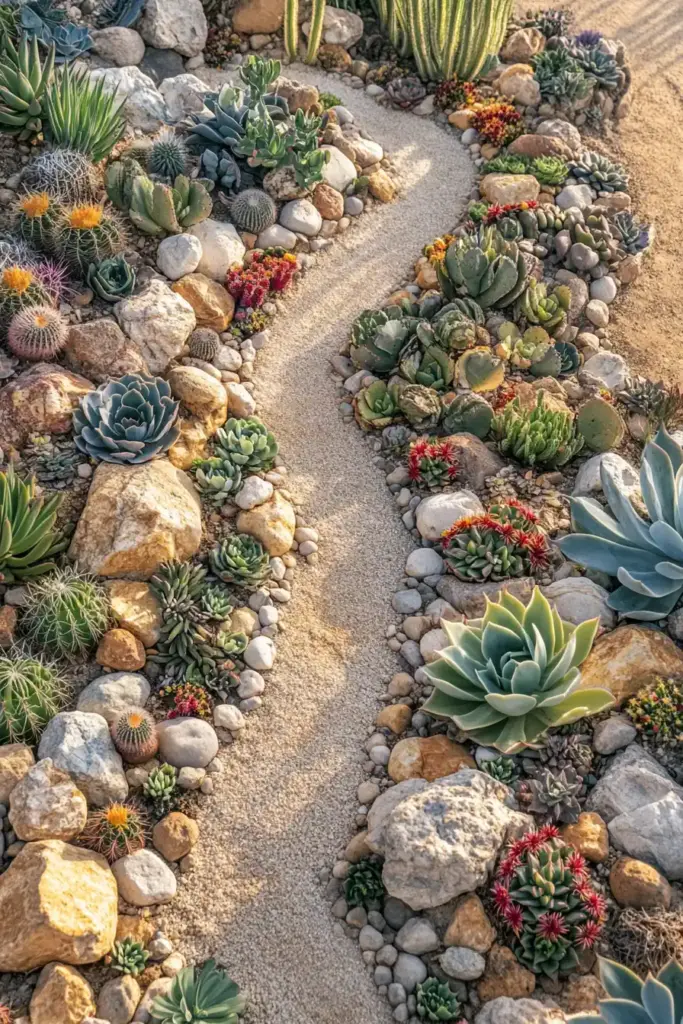
For gardeners looking to conserve water without sacrificing beauty, Xeriscaping with succulents is a brilliant strategy. Xeriscaping focuses on creating landscapes that require minimal irrigation by using drought-tolerant plants and smart design techniques. Succulents like Agave, Aloe, and Sedum naturally thrive in low-water environments, making them ideal for this sustainable gardening approach.
How to design a xeriscaped succulent garden:
- Select a variety of drought-resistant succulents suited to your climate.
- Incorporate gravel, decomposed granite, or mulch to reduce soil evaporation.
- Group plants with similar water needs together for easier maintenance.
- Install a drip irrigation system if needed for efficient watering.
By embracing succulent landscape design ideas rooted in xeriscaping, you not only create a stunning garden but also contribute to water conservation efforts — a win-win for you and the environment!
Succulent Rock Gardens
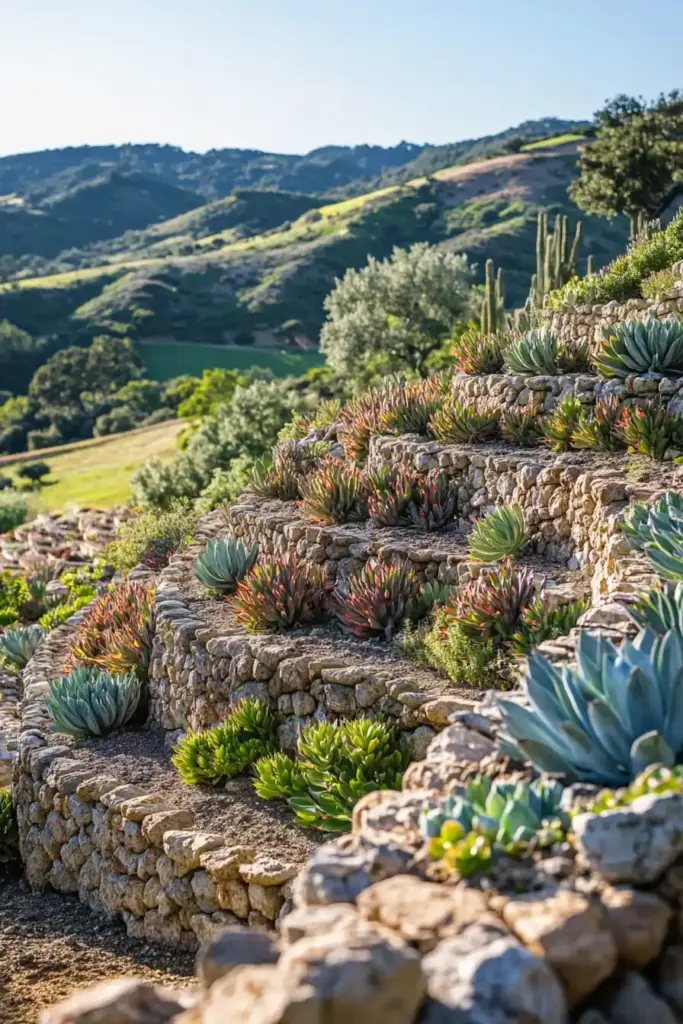
For a natural and effortlessly beautiful landscape, Succulent Rock Gardens offer the perfect solution. Rocks and succulents are a match made in gardening heaven — the stones provide essential drainage, natural elevation, and striking visual contrast to the fleshy, vibrant plants. Plus, rock gardens mimic the succulents’ native environments, helping them thrive with minimal fuss.
Tips for creating a stunning succulent rock garden:
- Use a mix of large boulders, medium rocks, and gravel for a layered effect.
- Choose hardy succulents like Sempervivum, Aeonium, and Agave that pair well with rocky settings.
- Tuck small succulents into crevices between rocks for a natural, organic look.
- Design slight slopes or mounds to improve drainage and add depth to your layout.
Succulent rock gardens are perfect for adding rugged beauty to any yard while keeping maintenance simple and sustainable.
Artistic Succulent Container Gardens
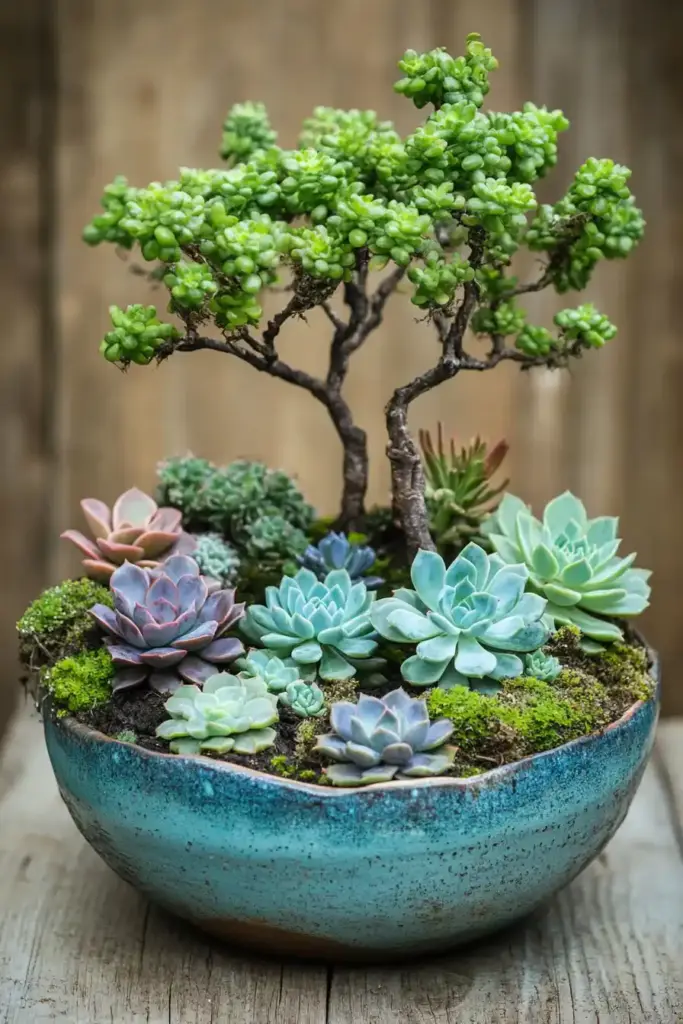
Unleash your creativity with Artistic Succulent Container Gardens — a flexible, fun way to showcase succulents in a variety of unique pots and planters. By mixing and matching different container styles and succulent varieties, you can create mini masterpieces that fit patios, porches, or even small apartment balconies.
Ideas for designing artistic container gardens:
- Use unexpected containers like teacups, old boots, or vintage tins for a whimsical touch.
- Combine a variety of succulent shapes, colors, and sizes for an eye-catching arrangement.
- Choose shallow pots with good drainage to keep roots healthy.
- Group containers together at different heights for a layered, gallery-like effect.
Artistic succulent gardens let you express your personal style while keeping care simple and straightforward — perfect for gardeners of all experience levels!
Layered Heights
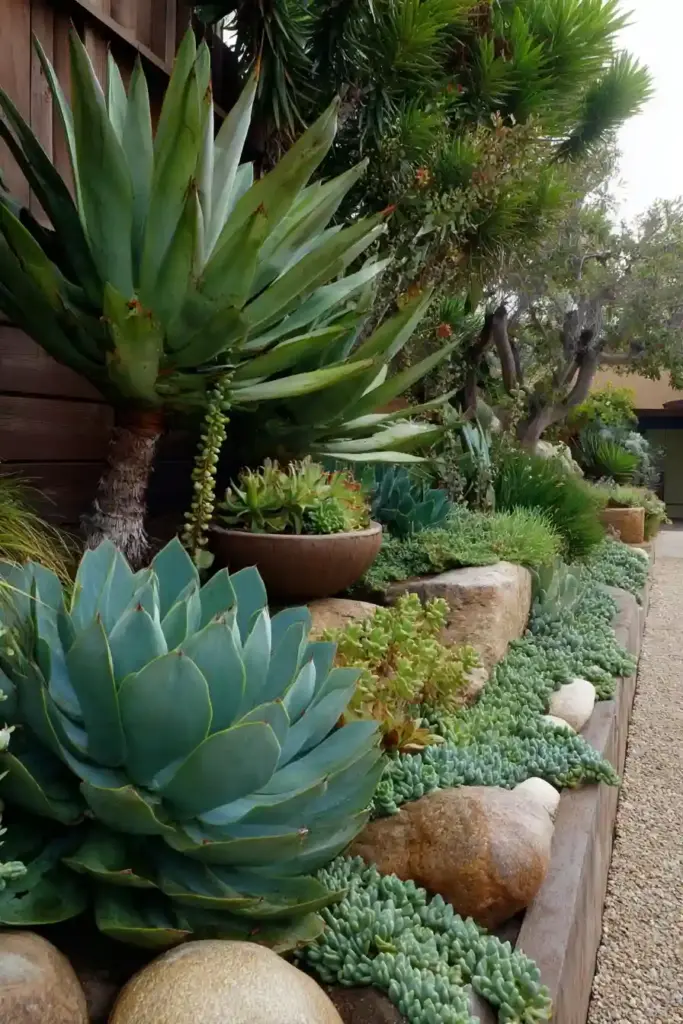
Adding dimension to your garden is easy when you focus on Layered Heights. By arranging succulents of varying sizes and elevations, you create a dynamic, multi-tiered landscape that feels lush and engaging. Taller plants like Agave and Euphorbia can form the backbone, while mid-sized Echeveria and cascading String of Bananas fill in the middle and foreground.
Tips for creating visual depth with layered heights:
- Place taller succulents toward the back or center of garden beds, depending on your viewing angle.
- Gradually step down in height, layering mid-sized and low-growing plants.
- Use raised beds, mounds, or decorative pedestals to enhance elevation changes.
- Mix upright, sprawling, and trailing growth habits for a more natural flow.
Incorporating layered heights into your succulent landscape not only maximizes space but also brings a rich, garden-like fullness to your design.
Succulent Borders
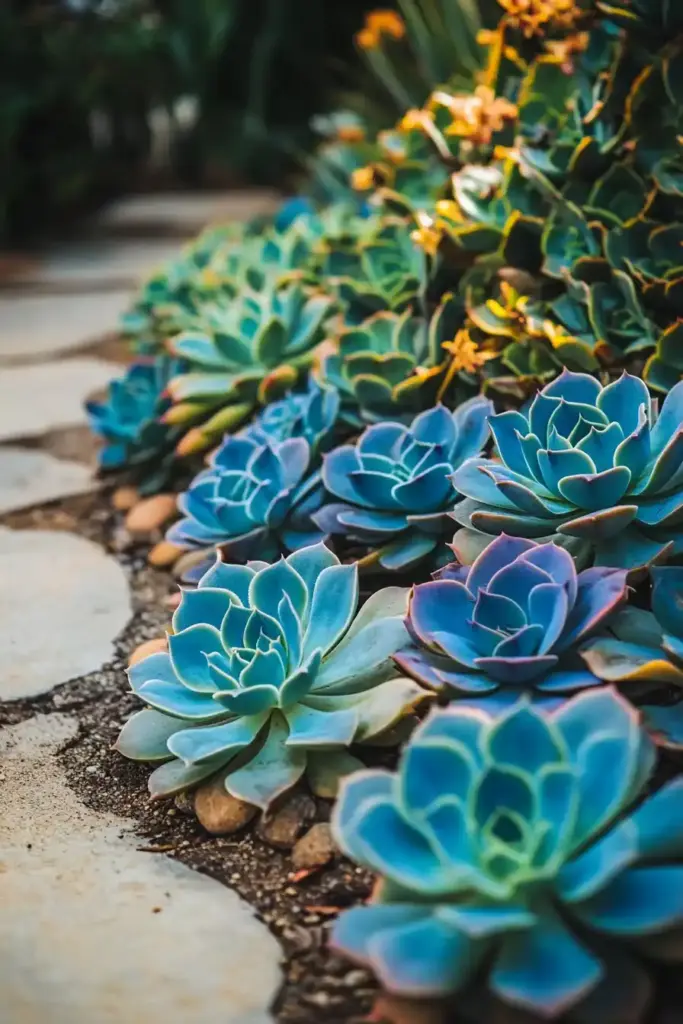
Frame your garden spaces beautifully with Succulent Borders. Using low-growing succulents along pathways, flower beds, or around patios creates a polished, cohesive look while adding a pop of color and texture. Plus, succulent borders are hardy, drought-tolerant, and low-maintenance — perfect for busy gardeners.
Ideas for crafting standout succulent borders:
- Plant compact varieties like Sedum, Delosperma, and Dwarf Aloe for neat, tidy edges.
- Alternate different colors and textures to create a visually interesting border.
- Keep borders narrow for a clean, defined appearance, or let them sprawl slightly for a more natural look.
- Use repeating patterns of the same succulent species for a sense of rhythm and order.
Succulent borders elegantly define spaces while adding charm and resilience to your overall garden design.
Succulent Wall Art
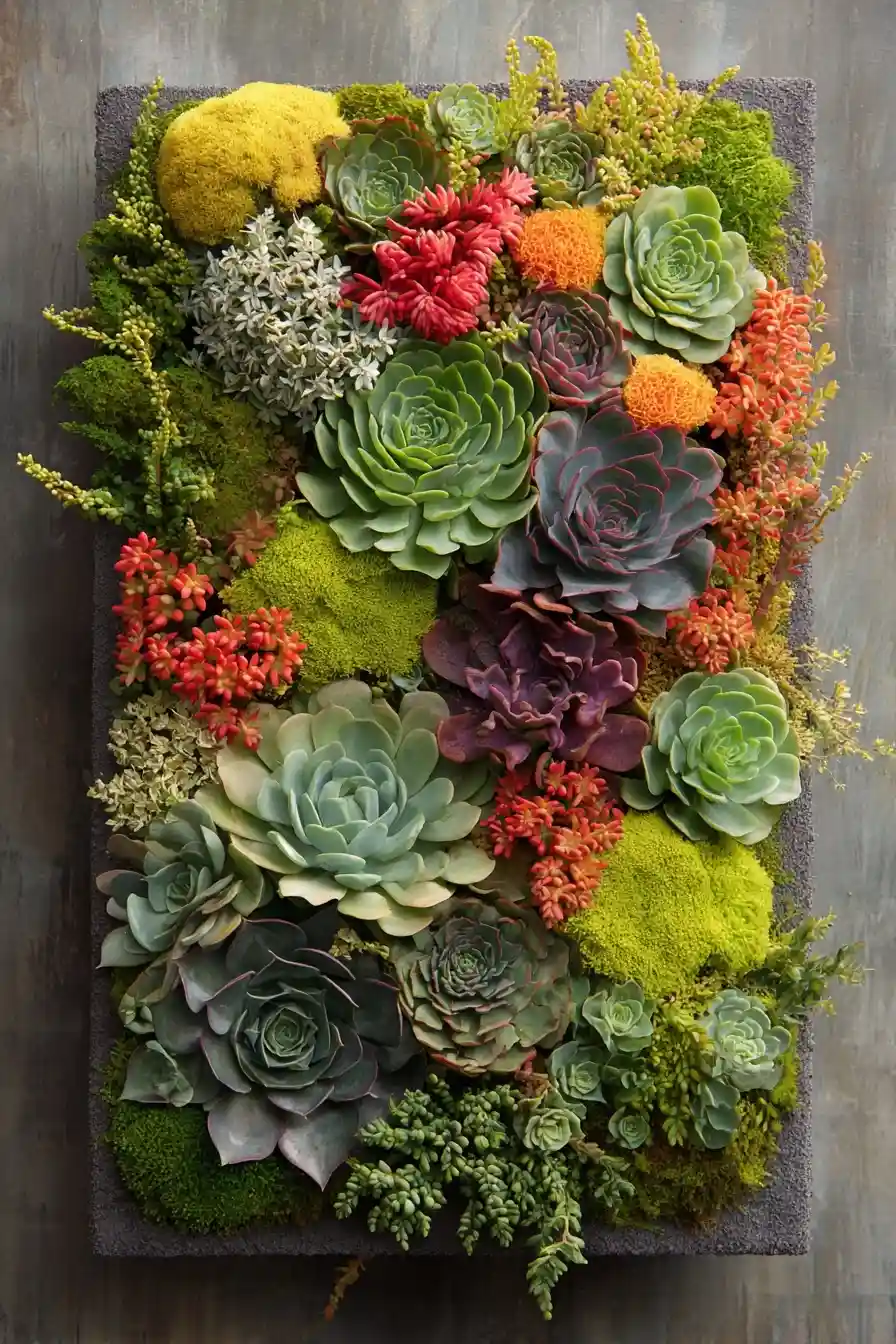
Why limit your creativity to the ground when you can turn your garden walls into living masterpieces with Succulent Wall Art? Framed arrangements of succulents bring texture, color, and a wow factor to vertical spaces, blending gardening with artistry in a truly unique way.
Tips for creating beautiful succulent wall art:
- Use shallow frames filled with a lightweight soil mix and a sturdy mesh to hold the plants.
- Select small, slow-growing succulents like Crassula, Echeveria, and Sedum for easy maintenance.
- Arrange plants tightly to create colorful patterns or even simple designs like hearts or waves.
- Hang your succulent wall in a spot that gets plenty of light but is protected from heavy rain.
Succulent wall art transforms ordinary spaces into vibrant, living canvases that are sure to impress every visitor.
Drought-Resistant Ground Cover
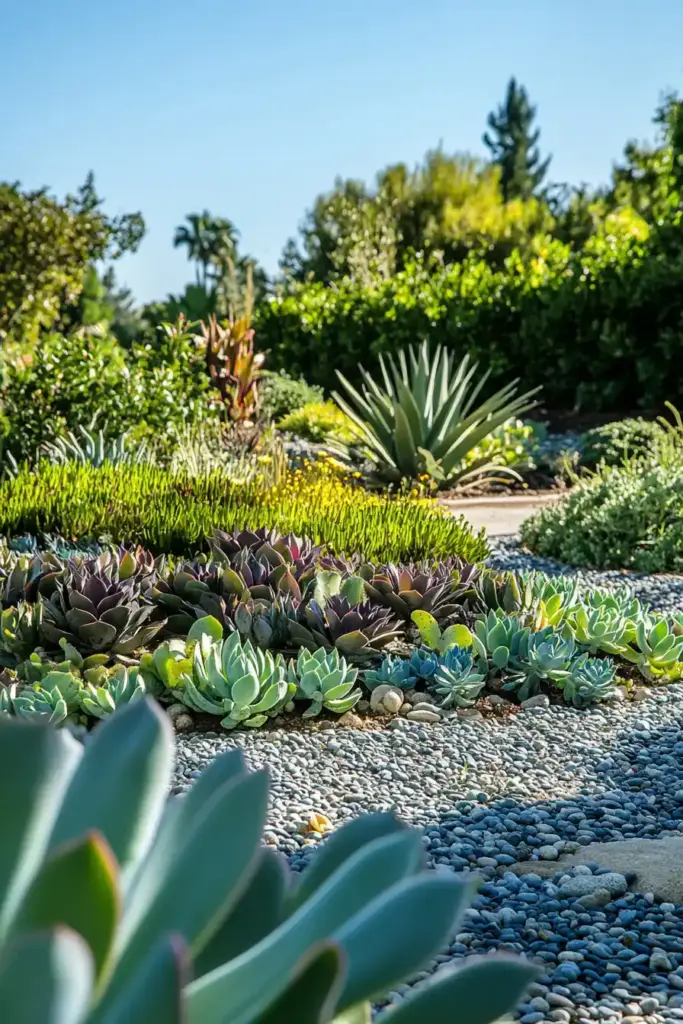
Covering open areas with Drought-Resistant Ground Cover is a smart and sustainable way to enhance your garden’s beauty while minimizing water use. Succulents like Sedum, Ice Plant (Delosperma), and Crassula can spread quickly across the ground, creating a lush, colorful carpet that naturally suppresses weeds and reduces soil erosion.
How to use succulent ground covers effectively:
- Choose varieties that match your climate and sun exposure.
- Plant closely together to encourage quicker fill-in and denser coverage.
- Mix different species for a patchwork of colors, textures, and seasonal blooms.
- Use ground cover succulents around trees, pathways, or between stepping stones.
By incorporating drought-resistant ground cover into your succulent landscape, you’ll enjoy a vibrant, low-maintenance yard that thrives even during dry spells.
Succulent Fountains
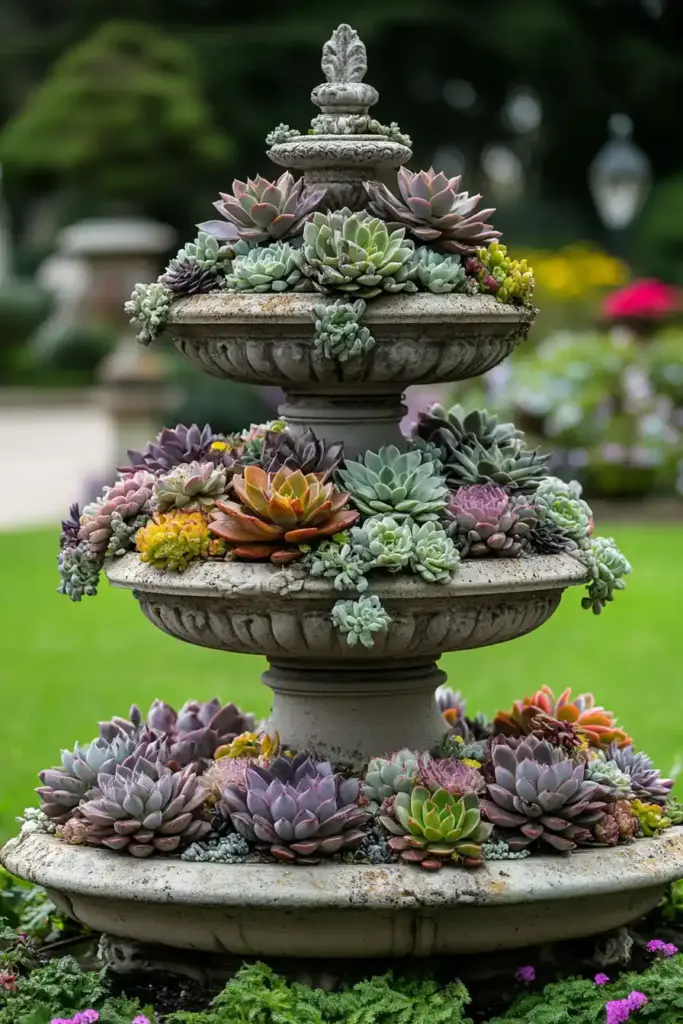
Bring a soothing, artistic touch to your yard with Succulent Fountains. Instead of flowing water, these fountains feature tiers or basins filled with cascading succulents, offering the peaceful ambiance of a traditional fountain without the maintenance. It’s a creative way to reuse old or nonfunctional fountains and add stunning vertical interest to your garden.
Ideas for designing a succulent fountain:
- Choose a multi-tiered fountain or birdbath with good drainage.
- Plant trailing succulents like String of Pearls, Burro’s Tail, and Senecio radicans to drape beautifully over the edges.
- Mix upright succulents in the basins for a fuller, balanced look.
- Place your succulent fountain in a sunny, visible spot to showcase its living beauty.
Succulent fountains combine the charm of traditional garden features with the practicality and resilience of succulent plants, making them a standout centerpiece.
Succulent and Stone Compositions
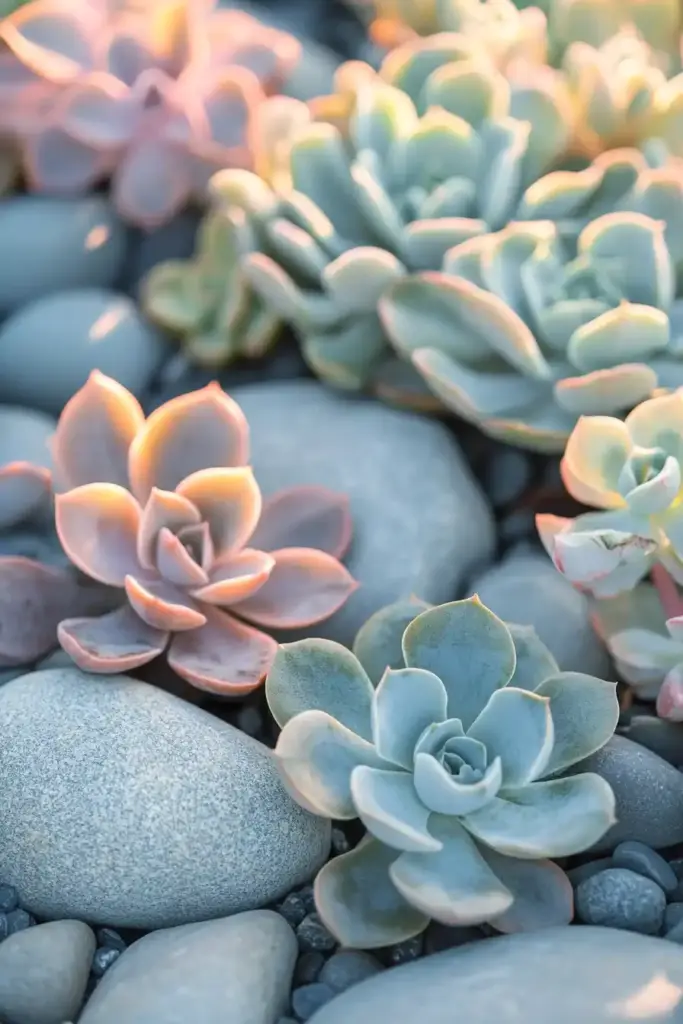
For a rugged, natural look, consider designing Succulent and Stone Compositions. Blending succulents with various rocks, pebbles, and boulders creates a visually striking landscape that mimics the beauty of arid, mountainous terrains. The stones not only enhance aesthetics but also help with drainage — crucial for keeping your succulents healthy.
How to design beautiful succulent and stone compositions:
- Choose a variety of rock sizes and colors to create depth and texture.
- Cluster succulents near the base of boulders or in rocky crevices for a natural look.
- Use larger stones as anchors and let smaller succulents and pebbles fill the spaces.
- Consider adding dry riverbeds or rock mosaics to weave the entire landscape together.
Succulent and stone compositions provide a harmonious blend of rugged beauty and low-maintenance gardening, perfect for creating a bold, nature-inspired backyard.
Seasonal Succulent Displays
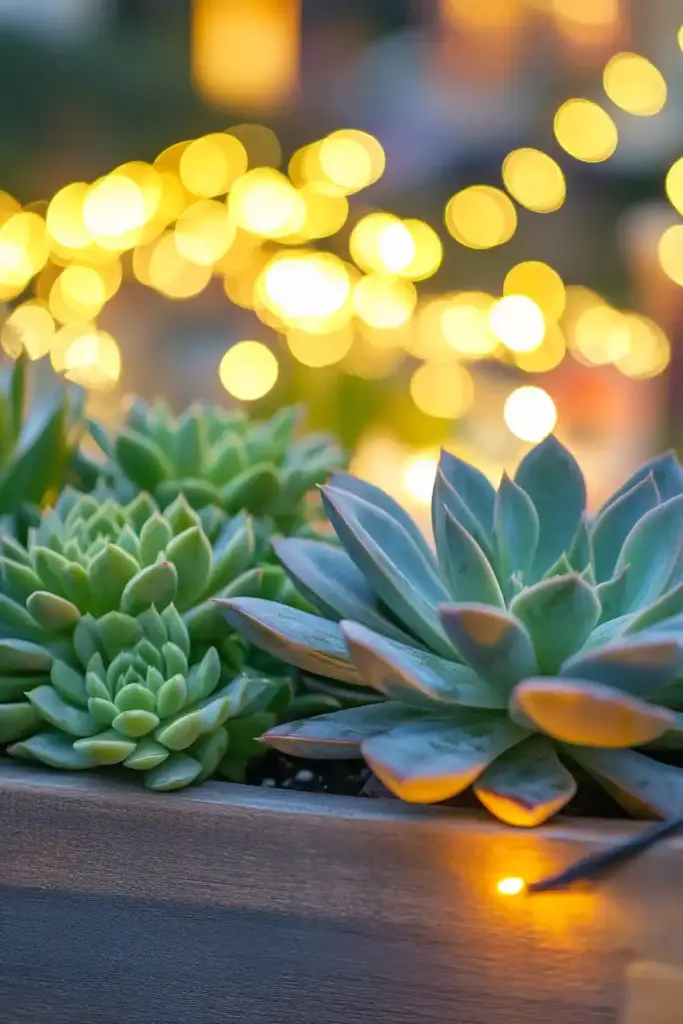
Keep your garden fresh and exciting year-round with Seasonal Succulent Displays. By rotating your succulent arrangements with the seasons, you can celebrate changing colors, textures, and even blooms while keeping your landscape lively and engaging.
Tips for creating stunning seasonal displays:
- In spring and summer, highlight flowering succulents like Kalanchoe and Aloe.
- Use autumnal tones — reds, oranges, and yellows — with varieties like Graptosedum and Crassula.
- Add winter-hardy succulents like Sempervivum and Sedum in colder months for continued color.
- Swap decorative elements like planters, stones, or mulch colors to match seasonal themes.
Seasonal succulent displays allow you to enjoy a dynamic, ever-evolving landscape while keeping the maintenance simple and fun throughout the year.
Succulent Terrariums
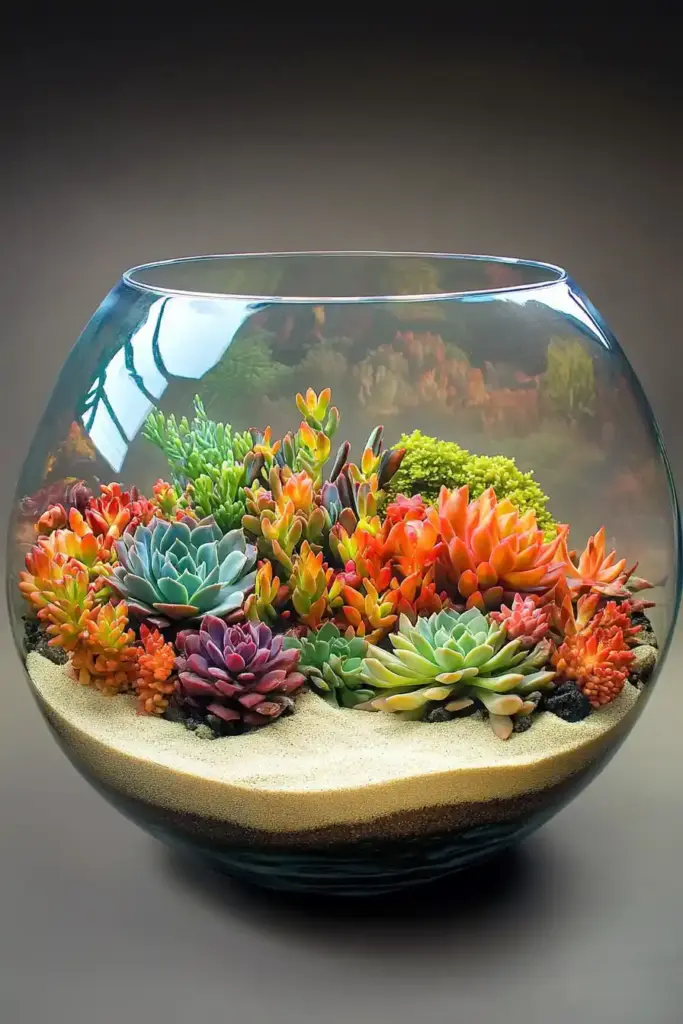
If you love mini gardens with a lot of charm, Succulent Terrariums are the perfect addition to your landscape — or even your indoor spaces. These glass-enclosed gardens create self-contained, low-maintenance ecosystems that highlight the intricate beauty of small succulents.
How to create an eye-catching succulent terrarium:
- Choose an open-top glass container to allow airflow and prevent excess moisture.
- Layer the base with small stones for drainage, followed by cactus soil.
- Plant compact succulents like Haworthia, Echeveria, and Mini Jade for a balanced look.
- Decorate with tiny pebbles, driftwood, or miniature figurines for extra personality.
Succulent terrariums are not only a fun DIY project but also offer a stylish way to bring a touch of greenery to tabletops, patios, or shady garden corners.
Wildlife-Friendly Gardens
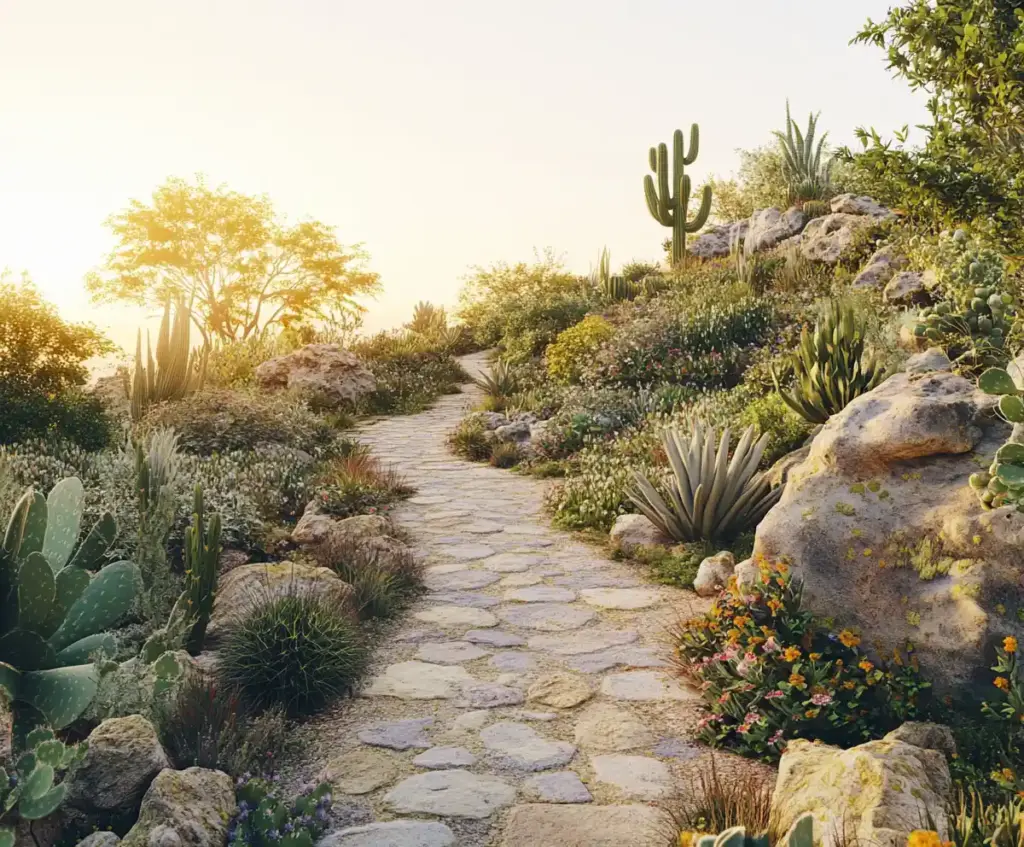
Transform your outdoor space into a haven for beneficial creatures by designing Wildlife-Friendly Gardens with succulents. Many succulents, especially those that flower like Aloe and Sedum, attract bees, butterflies, and other pollinators, supporting local ecosystems and promoting a healthy, balanced garden environment.
How to make your succulent garden wildlife-friendly:
- Plant flowering varieties like Aloe, Kalanchoe, and Sedum to provide nectar for pollinators.
- Avoid pesticides that could harm bees and butterflies.
- Incorporate native plants alongside succulents to create a diverse habitat.
- Add features like bird baths, bee houses, or butterfly stones to welcome more wildlife.
By blending succulent landscape design ideas with eco-friendly practices, you’ll create a beautiful space that nurtures both your plants and the important creatures that visit them.
FAQ: Succulent Landscape Design Ideas
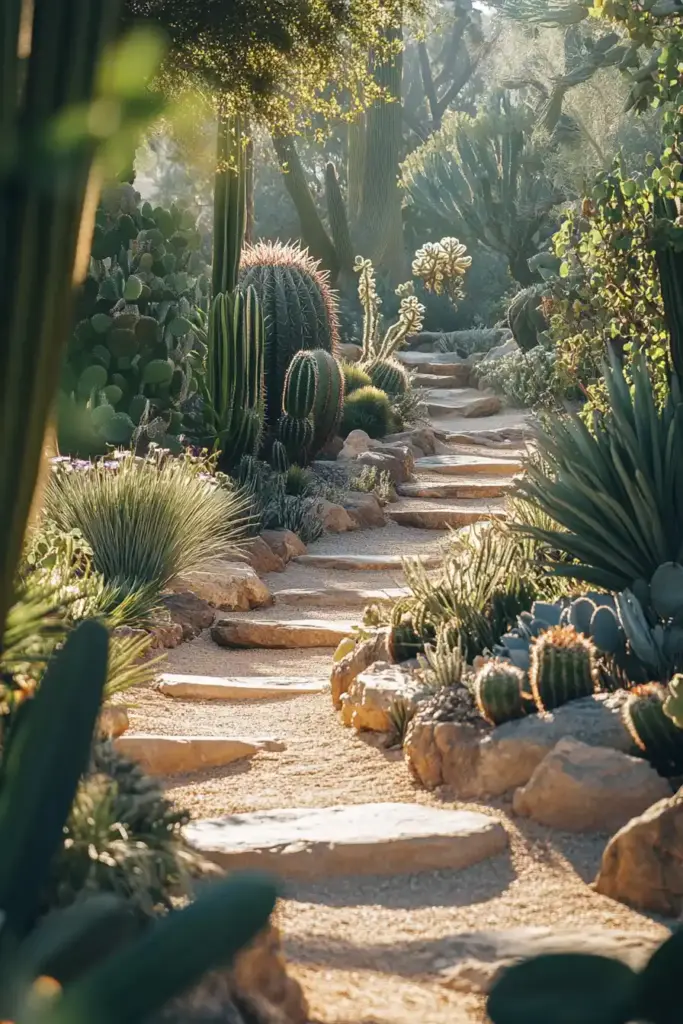
What succulents are best for outdoor landscaping?
Hardy succulents like Agave, Aloe, Sedum, Echeveria, and Sempervivum are excellent choices for outdoor landscaping. They can handle full sun, minimal water, and a variety of soil types, making them perfect for low-maintenance gardens.
How do I start a succulent garden in my yard?
Start by choosing a sunny spot with well-draining soil. Amend the soil if needed with sand or gravel, and select a variety of succulents that suit your climate. Group plants with similar care needs, and use mulch or rocks to help retain moisture without causing root rot.
Can succulents survive winter outdoors?
Some cold-hardy succulents, like certain Sedums and Sempervivums, can survive frost and snow. However, more tender varieties may need to be moved indoors or protected with frost cloths during freezing temperatures.
How often should I water succulents in a landscape?
Outdoor succulents typically need watering once every 1–2 weeks during dry periods. Always let the soil dry out completely between waterings to prevent root rot. Established succulent landscapes can often rely on rainfall alone in many climates.
Do succulents need special soil for landscaping?
Yes! Succulents thrive in fast-draining soil. For landscaping, you can amend your existing soil with coarse sand, perlite, or small gravel to improve drainage. Specialized cactus and succulent soil mixes are also a great choice.
How can I make my succulent landscape more colorful?
Use a mix of colorful succulents like Crassula ‘Campfire’, Echeveria ‘Lola’, and Graptosedum. You can also incorporate decorative rocks, painted pots, and seasonal blooms to add even more vibrancy to your landscape design.
Conclusion
With so many creative succulent landscape design ideas to choose from, the possibilities for transforming your yard are endless. Whether you dream of a serene Zen oasis, a vibrant coastal garden, or a rugged rock-scape, succulents offer the perfect combination of beauty, resilience, and low-maintenance charm.
Don’t be afraid to mix, match, and experiment — blending planters, stones, textures, and colors to create a breathtaking outdoor retreat that truly reflects your personal style. With their drought tolerance and easy care, succulents provide a sustainable, flexible way to design landscapes that are as stunning as they are practical.
Ready to start crafting your own succulent paradise? Let your creativity bloom and watch your outdoor space come to life!
🌿 Love gardening inspiration? Follow me on Pinterest for bold plant ideas, tips, and seasonal color!
More Posts
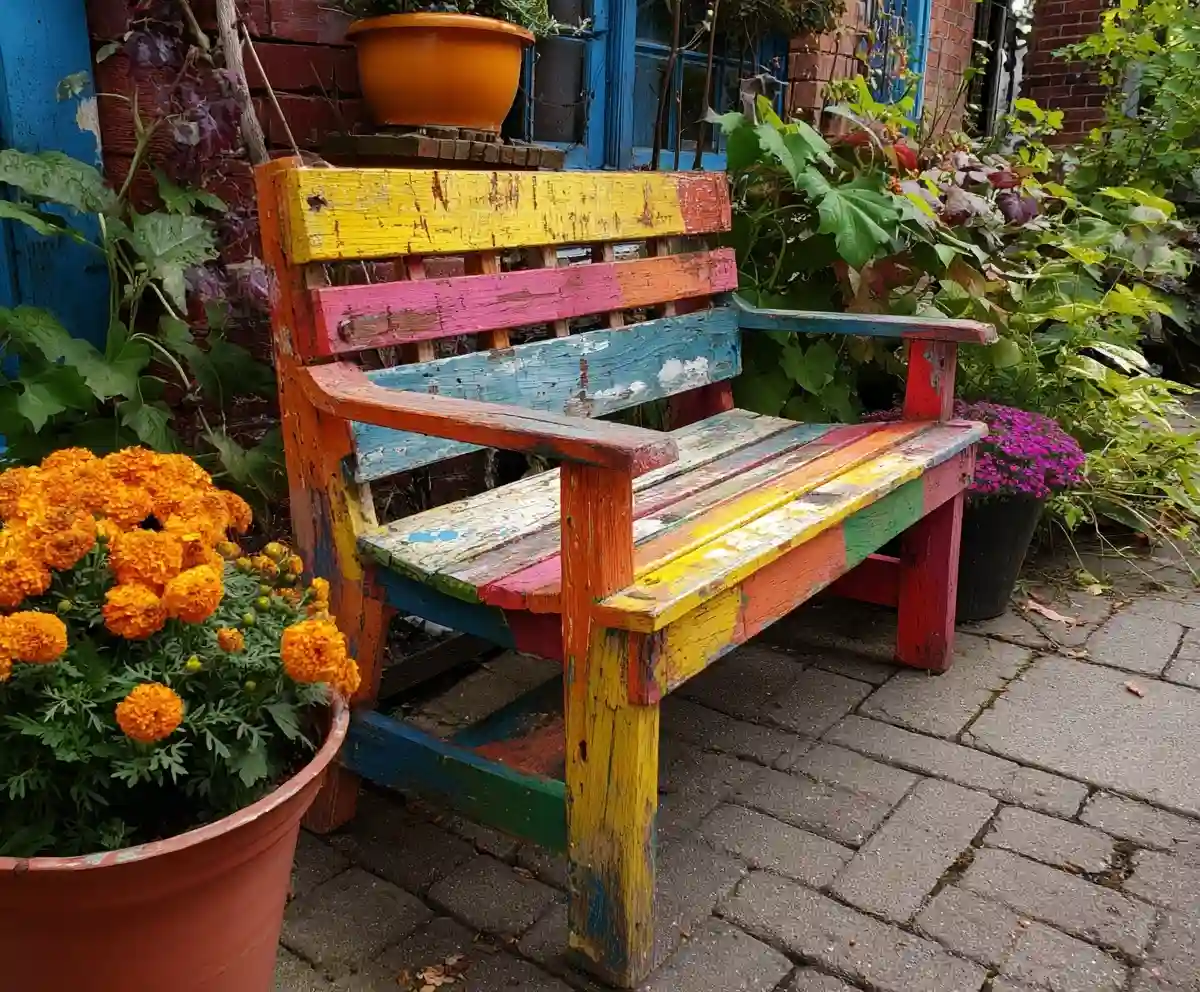
19+ Budget-Friendly Backyard Makeover Ideas
Backyard makeover ideas can turn even the most ordinary outdoor space into a warm, inviting retreat—without draining your wallet.
Read More →
21 Stunning & Simple DIY Clematis Trellis Designs
DIY clematis trellis designs are a beautiful way to blend creativity with function in your garden.
Read More →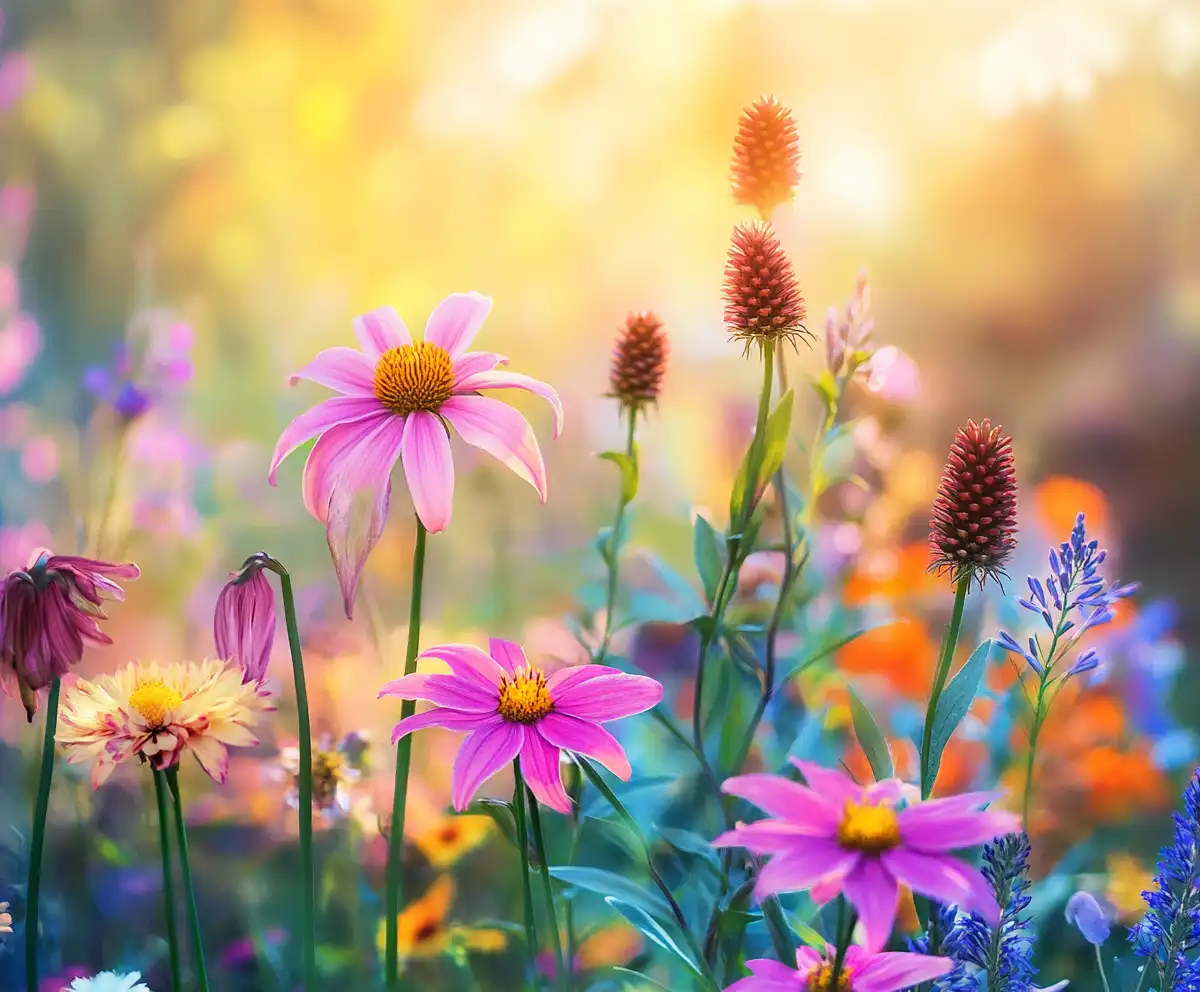
12 Full Sun Perennials That Bloom All Summer
Explore a selection of hardy perennials that flourish and bloom beautifully in full sun throughout the summer.
Read More →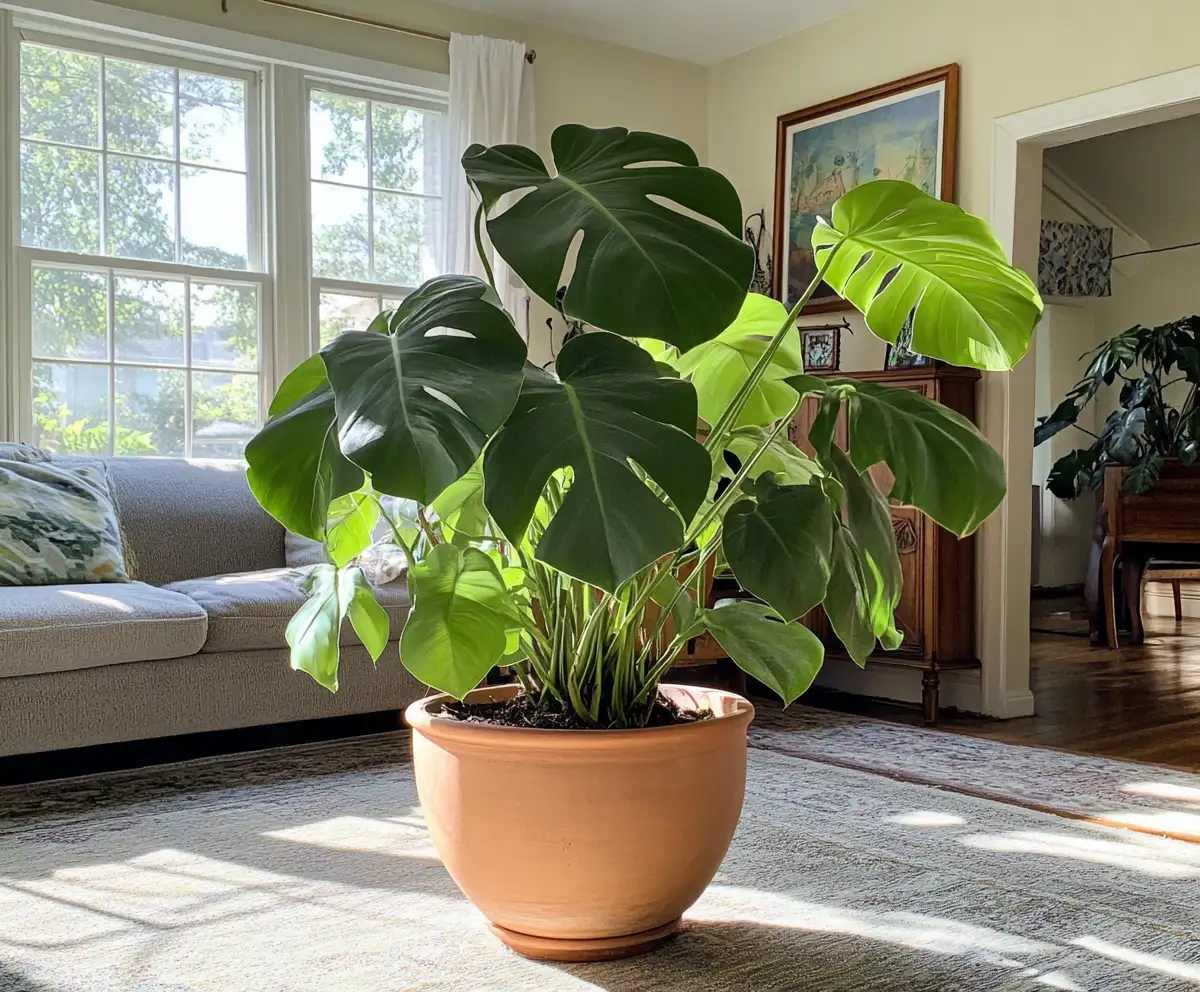
Houseplants for Living Room
Find the perfect houseplants to brighten and purify your living room while adding a touch of nature indoors.
Read More →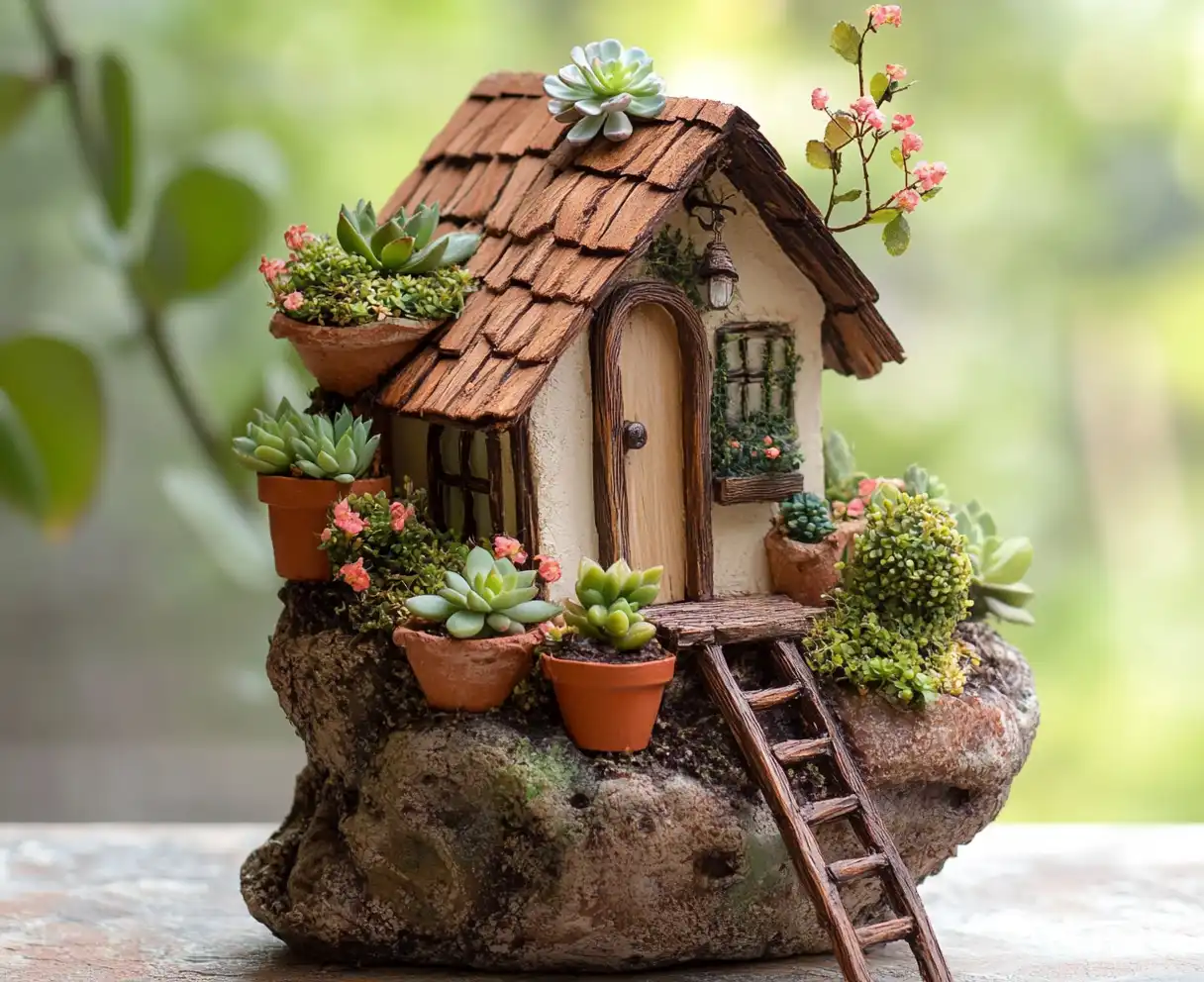
Backyard Play Area for Kids
Create a fun and safe backyard play area for kids with these inspiring design ideas and tips.
Read More →
Top Privacy Trees
Discover top tree varieties that provide natural privacy and enhance your outdoor space.
Read More →
